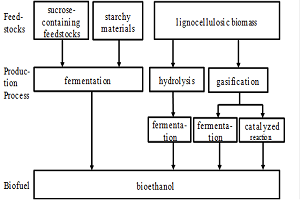
Soo-Young No
Chungbuk National University, Korea
Title: Application of bioethanol in dual-fuel combustion – A review
Biography
Biography: Soo-Young No
Abstract
According to the importance of ethanol as an alternative biofuel and the current research trends towards more advanced internal combustion (IC) engine, it is required to fully understand the combustion and emission characteristics of advanced CI engines fuelled with ethanol. The main concern in this review is the application of bioethanol to one of advanced compression ignition (CI) engines, dual-fuel combustion (DF). DF combustion strategy is one idea to overcome the challenges of HCCI combustion mode. HCCI is limited to low loads because at high loads, the occurrence of excessive pressure rise rates resulted in the pressure ringing and audible noise. The aim of this study is to provide a comprehensive overview of the literature on the application of bioethanol in DF combustion. This review is a part of an on-going review project of application of bioethanol to the advanced CI engines. In this review, it is found that the method for ethanol-diesel dual fuel combustion in CI engine can be divided into four categories: i.e.1) PFI of the ethanol and DI of the diesel in cylinder, 2) PFI of the diesel and DI of the ethanol, 3) dual fuel direct injection, 4) ethanol PFI and diesel DI with split injection. Of four techniques, the ethanol PFI and diesel DI was the prevailing technique to be studied in the dual fuel combustion. Instead of neat ethanol, E85 was introduced by several researchers to DF combustion mode. However, there is only one study introduced the hydrous ethanol in ethanol-diesel DF combustion mode. In addition, instead of neat diesel fuel, biodiesel was utilized as the ignition source. In this case, biodiesel produced from the inedible vegetable oils are more desirable. The parameters affected to DF combustion include premixed ratio, compression ratio, injection pressure, exhaust gas recirculation (EGR), intake boost, diesel pilot timing and intake temperature. To quantify the ratio of two fuels in any DF configurations, three different bases, i.e. mass flow basis, energy basis and power basis were introduced. The energy basis was the prevailing method for evaluation. In the DF combustion mode, a higher premixed ratio up to 66% was capable of decreasing NOx and soot emissions, while incomplete combustion products such as HC and CO were generally higher than those of conventional diesel combustion. It was found that the wide
range of values was introduced for the acceptable PRR and COVIMEP. The use of ethanol in DF combustion in CI engines is suitable for the high load LTC enabling.

